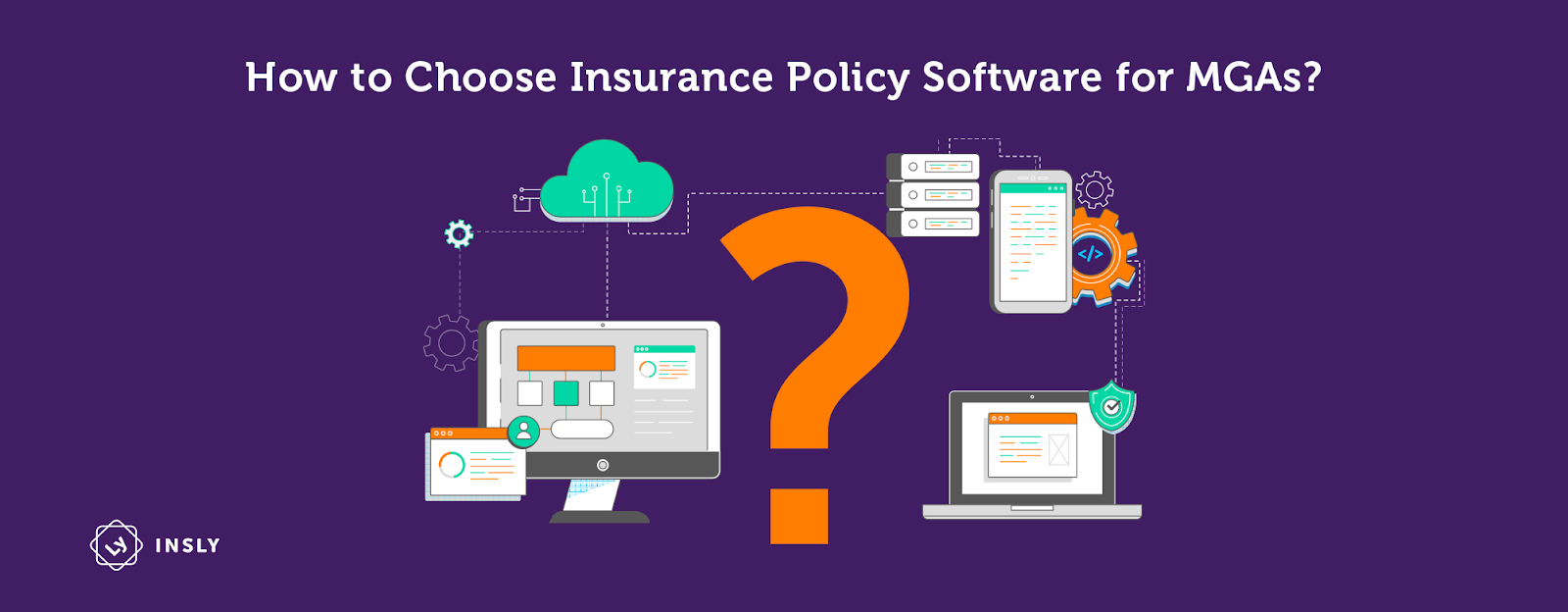If you’re looking to digitise some or all your insurance processes, then it can be difficult to know where to start. Insurance policy software has exploded in recent years, as MGAs and insurance companies have aimed to streamline how they work, improve the customer experience, and find operational efficiencies. But understanding your options and deciding which one is right for your business can take a lot of research and planning.
There are numerous insurance policy software providers on the market, along with plenty of terminology and jargon to get your head around. Sometimes known as insurance policy management software, insurance policy administration software, or simply insurance software, these systems now cover the entire insurance lifecycle from quote and bind right through the claims. And they are becoming more sophisticated all the time.
So, if you’ve just started your search, what should you look for when choosing an insurance policy management system?
Off the shelf, custom built – or no code?
Insurance is a complex industry, and every MGA is different based on the sectors they serve, the type of insurance they sell, and how they distribute their policies. When looking to buy policy admin software, the first decision is therefore how customised you want the technology to be, bearing in mind the budget you have available.
At one end of the scale is an off-the-shelf solution, which will be reasonably priced, however won’t allow for much customisation, and therefore might not meet your needs very closely. At the other end is a fully customised solution, created specifically for your business needs – but expensive, and time-consuming as a result.
Thankfully, there are now an increasing number of providers that sit somewhere in the middle, with so-called no-code solutions. These combine the best of both worlds, through offering a selection of ready-made modules that can be customised very closely to your business needs, without lengthy, and costly, development cycles.
What key functionality do you need?
All insurance policy software providers weren’t created equal; they all have different strengths and weaknesses and slightly different functionality. Some cover the entire insurance lifecycle; others only cover certain elements. Some are more innovative than others. So, before you review any potential partners, start by deciding on your own priorities, based on your objectives and the main areas of complexity in your own business.
If you sell policies directly to consumers and you’re looking to improve the customer experience, then front end might be a priority. Or if you sell through brokers then you may be focused on streamlining those relationships. Or perhaps you’re looking to improve reporting to your carrier partners, or better identify fraud during the claims process. Whatever those pinch points are, make sure you have them mapped out, so you can rate providers on how well they match up.
Integrations, onboarding, maintenance – and growth!
Once you’ve identified those providers that match your functionality needs, there are a few other considerations to think about. Firstly, how well does the insurance policy management system leverage APIs to integrate with other platforms? You may want to keep some of your legacy systems, in which case can they communicate, so that all team members and documents are updated automatically? A particular area to think about is finance – can it connect with your accounting systems to aid compliance and audit processes?
Secondly, what is the onboarding process like? In the case of no-code solutions, there will be a period of customising the system to your business needs, so find out what this involves, what the timescales are, and how the company deals with any obstacles. Review case studies and ask to speak to existing clients to get an in-depth idea of how onboarding works, and gain confidence that it will go smoothly to avoid disruption.
Finally, consider how your needs could change in the future and how well the system is set up to handle that. Many insurance policy management systems now are modular, involving what are known as microservices, making it easy to add elements of functionality over time as your needs change. Find out how easy it is to do this, and whether this is something you can do internally, or requires external developer support.
Getting your head around insurance policy software can be daunting, but once you’ve made a few key decisions, you can quickly narrow down your search. From there, it comes down to specific areas of functionality, innovation, practicalities, and how well you get on with the team itself.
Here at Insly, we’ve built a no-code system that makes digitising insurance processes as seamless as possible for MGAs, whatever your requirements. Plus, we’re easy and fun to work with. So, if you want to discuss your needs further then drop us a line or book a demo.



